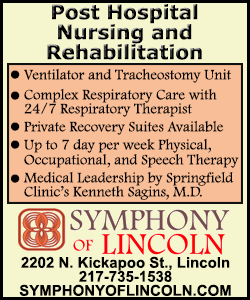|
 Researchers tracked TB that is resistant to at least four key drugs
and found that 69 percent of the victims had never received
treatment, an indication that they had acquired it from others with
extensively drug-resistant TB. Researchers tracked TB that is resistant to at least four key drugs
and found that 69 percent of the victims had never received
treatment, an indication that they had acquired it from others with
extensively drug-resistant TB.
TB develops resistance to drugs when it is attacked with lackluster
therapy, allowing the slow-growing bacterium to become insensitive
to well-established therapies. Strains that are simultaneously
resistant to at least four drugs have been reported in 105
countries.
"For many years, there was this thought that maybe drug-resistant TB
strains might not be able to be transmitted as efficiently a regular
TB strains," coauthor Dr. Neel R. Gandhi of Emory University’s
Rollins School of Public Health in Atlanta told Reuters Health by
phone.
The results published in the New England Journal of Medicine "turn
this idea on its head," said Dr. William Schaffner, professor of
infectious disease at Vanderbilt University Medical Center in
Atlanta who was not involved in the research.

The study team's estimate that two thirds of the cases are surfacing
because the disease is spreading by person-to-person contact "is
mostly likely a minimum estimate," Gandhi said.
"This is an epidemic we've known about for 10 years and we don't
seem to be making a dent in it," he said. "And that may be because
the driver isn't what we thought it was."
"It raises the possibility of turning the clock back to the 1930s
and 1940s" and requiring infected people to live in sanitariums so
patients can't inadvertently spread the disease, Schaffner said.
"You also have to do better at diagnosing them earlier. We're going
to have to be a lot more aggressive in finding the infected people
early. These are substantial public health challenges."
Drug resistance has gotten so bad, the rate of successful treatment
can be less than 40 percent if a person acquires an extensively
drug-resistant strain. It can be particularly deadly in people who
also harbor HIV, the AIDS virus. In South Africa, where the new
study was done, there has been a 10-fold increase in the number of
extensively drug-resistant cases in the past decade. One in 36,000
are now infected.
The team of researchers used contact tracing to find where the TB
patients were spending at least two hours per week, trying to
uncover any links.
They found 31 clusters of the disease, the largest of which
accounted for 84 percent of the 404 patients they studied.
[to top of second column] |

Living with someone with TB accounted for most of the acquired
cases, although the disease was also spread in the workplace
(representing 13 percent of cases) or in other community settings
such as a church, bar, beauty salon or prison (accounting for 8
percent of cases).
"Certain networks spanned multiple homes, family generations, and
community settings," the study team writes.
Complicating control is that people can be infectious before they
know they have drug-resistant TB.
"We know people transmit (the disease) for weeks or months before
they come for a diagnosis," said Gandhi, an associate professor of
epidemiology, global health and infectious diseases at Emory.
"You have to focus on stopping the chain of transmission," he said.
"You have to identify early and intervene early. When you diagnose,
drug susceptibility should be part of that diagnosis. And we have to
do a better job creating facilities where transmission doesn't take
place, particularly in healthcare settings, hospitals, homeless
shelters in the United States and in schools and workplaces."
The other researchers involved in the study were from the U.S.
Centers for Disease Control and Prevention in Atlanta, the Albert
Einstein College of Medicine in New York and the University of
KwaZulu-Natal in South Africa, the province of 10.3 million people
where the study was done.
SOURCE: http://bit.ly/2jRqpOY New England Journal of Medicine,
online January 18, 2017. (This version of the story was refiled to
correct the spelling of Gandhi in paragraph 15)
[© 2017 Thomson Reuters. All rights
reserved.] Copyright 2017 Reuters. All rights reserved. This material may not be published,
broadcast, rewritten or redistributed.

 |